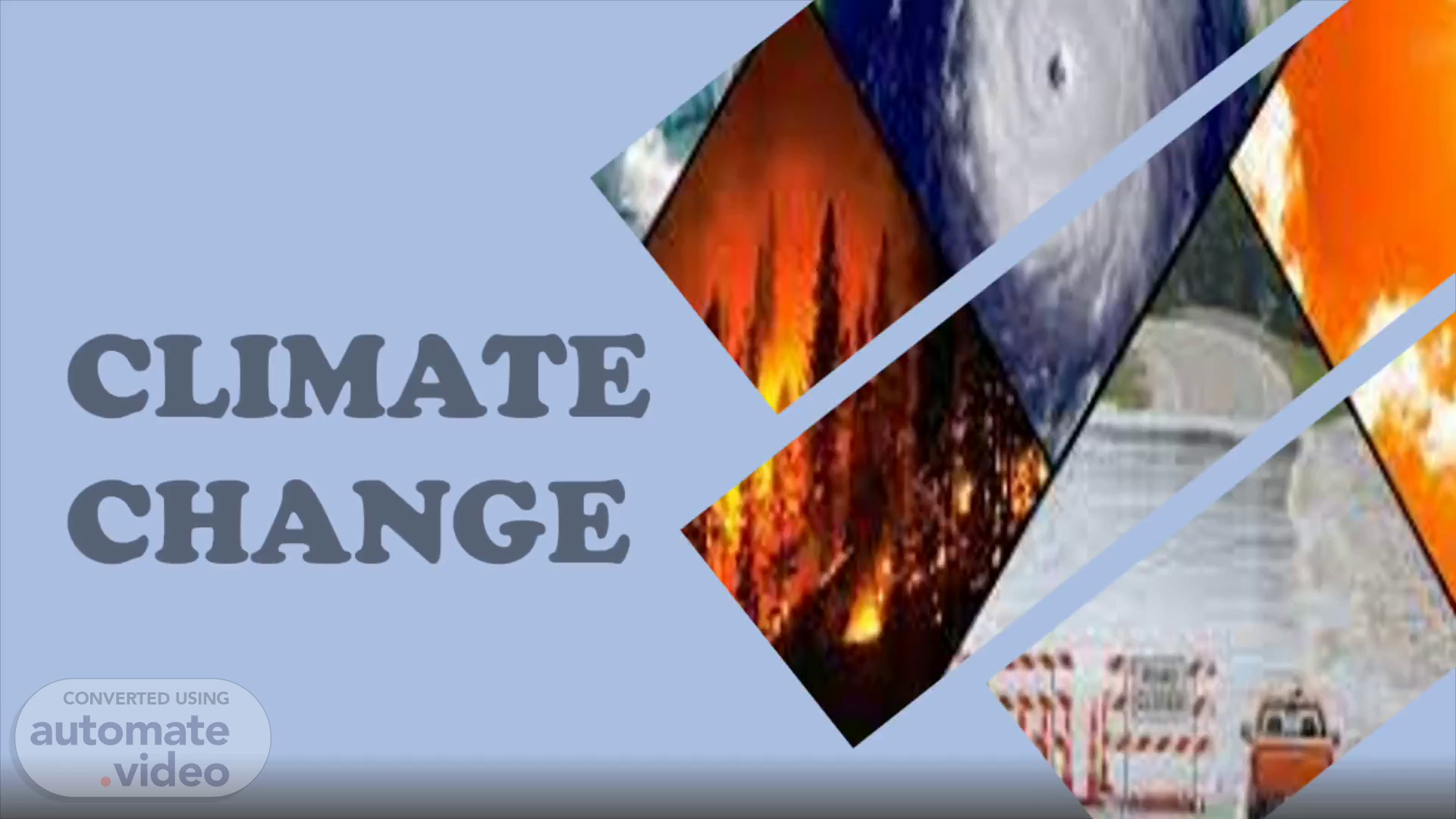
PowerPoint Presentation
Scene 1 (0s)
[Virtual Presenter] CLIMATE CHANGE. CLIMATE CHANGE.
Scene 2 (5s)
[Audio] CLIMATE CHANGE Climate change refers to the long-term changes in Earth's climate patterns, such as temperature, precipitation, and wind, caused by human activities such as burning fossil fuels, deforestation, and industrial processes. These activities release greenhouse gases, such as carbon dioxide and methane, into the atmosphere, trapping heat and causing the planet to warm up. This warming is causing a range of impacts, including sea level rise, more frequent and severe weather events, and changes in ecosystems and agriculture. Climate change poses significant challenges to society and the natural world, and addressing it requires a concerted effort to reduce greenhouse gas emissions and adapt to the changes already underway.
Scene 3 (53s)
[Audio] Rising Temperature Average global temperatures have increased by about 1 degree Celsius (1.8 degrees Fahrenheit) since the pre-industrial era. This warming trend is causing many impacts, such as melting glaciers, sea level rise, and more frequent and severe heatwaves..
Scene 4 (1m 30s)
[Audio] Extreme weather events: Climate change is causing more frequent and intense extreme weather events, such as hurricanes, floods, wildfires, and droughts. These events can lead to loss of life, property damage, and displacement of communities..
Scene 5 (1m 59s)
[Audio] Ocean acidification: As the ocean absorbs more carbon dioxide from the atmosphere, it becomes more acidic, which can harm marine ecosystems and disrupt the food chain..
Scene 6 (2m 15s)
[Audio] Changing ecosystems: Climate change is altering ecosystems by affecting the timing of seasonal events, such as migration and flowering, and by changing the ranges of species. This can lead to the loss of biodiversity and ecosystem services..
Scene 7 (2m 34s)
[Audio] Melting ice: Arctic sea ice has been declining rapidly in recent decades, and the Greenland and Antarctic ice sheets are also losing mass. This melting contributes to sea level rise, which threatens coastal cities and low-lying islands..
Scene 8 (2m 52s)
[Audio] Flooding A flood is the accumulation of water over normally dry land. It's caused by the overflow of inland waters (like rivers and streams) or tidal waters, or by an unusual accumulation of water from sources such as heavy rains or dam or levee breaches. As climate change warms up the atmosphere, the air can hold 7% more water vapour for every one-degree Celsius rise in temperature. When this air rapidly cools, water vapour turns into droplets which join together to form heavy rainfall1.
Scene 9 (3m 28s)
[Audio] Eat a plant-based diet: Eating a plant-based diet can reduce the amount of greenhouse gases that are produced from the production and consumption of meat and dairy..
Scene 10 (4m 1s)
[Audio] Support climate-friendly policies and initiatives: Governments, businesses, and organizations are taking action to address climate change. Supporting policies and initiatives that reduce carbon emissions can help drive change at a larger scale..
Scene 11 (4m 37s)
[Audio] Reduce, reuse, and recycle: By reducing waste, reusing items, and recycling materials, you can reduce the amount of waste that ends up in landfills, which contributes to greenhouse gas emissions..
Scene 12 (5m 12s)
[Audio] Use public transportation or carpool: Reducing the number of cars on the road can help reduce carbon emissions..
Scene 13 (5m 43s)
[Audio] Reduce energy consumption: One of the primary contributors to climate change is the burning of fossil fuels. You can reduce your energy consumption by using energy-efficient appliances, turning off lights when not in use, and adjusting your thermostat to conserve energy..
Scene 14 (6m 21s)
[Audio] Plant trees: Trees absorb carbon dioxide from the atmosphere and help reduce the amount of greenhouse gases in the air..
Scene 15 (6m 53s)
[Audio] Use renewable energy: Switching to renewable energy sources such as solar, wind, or hydroelectric power can help reduce carbon emissions..